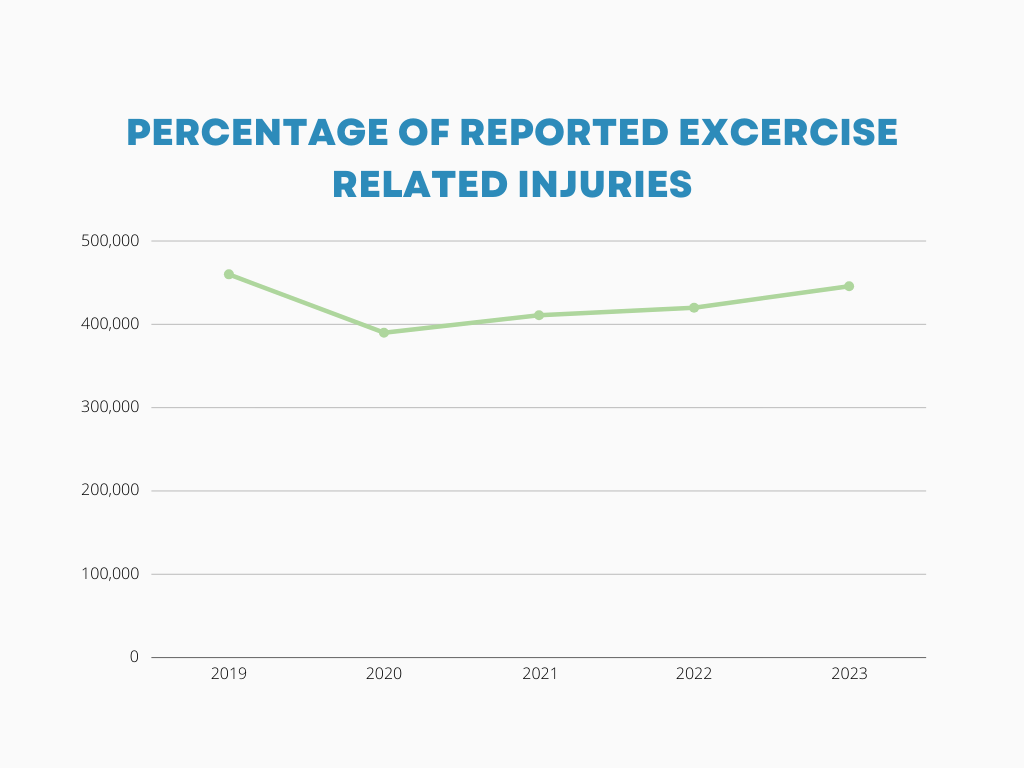Sports
Elevating Your Sports Performance: The Ultimate Guide

Welcome dedicated athletes and performance seekers. You’re here because you want to unlock your ultimate potential through advanced strategies designed to enhance strength, speed, and endurance. If you want to accelerate recovery and improve your overall health. This guide delves into cutting-edge techniques backed by science, taking your training to the next level.
Advanced Training Techniques
Transitioning from basic training, advanced techniques catalyze the adaptation process intensely. High-Intensity Resistance Training (HIRT) torches calories long after your session ends, with increased post-workout energy and fat expenditure per research from. Before starting high-intensity workouts, remember to equip yourself with the appropriate gear.
Wearing the proper workout outfit with the correct sports prescription glasses can minimize accidents when doing high-intensity training. The benefits of HIRT are enhanced when combined with Low-Intensity Blood Flow Restriction (BFR) Training.
BFR Training stimulates muscle strength gains comparable to heavy lifting, increasing size and power up to 20% over 4-6 weeks. Creating a personalized and robust training regime is the key to achieving the ideal athletic body. A proper program can elevate your sports performance and improve muscle growth.
Optimizing Muscle Hypertrophy and Strength
Muscle growth relies on mechanical tension and metabolic stress, causing hormonal and cellular shifts that energize anabolism. This biological cascade primes muscles for growth and strength-building after each bout. The key is tuning the optimal stress to your level to promote growth. Remember to not overexert yourself to prevent injuries gained from exercising too hard.
Customize your program for your individual needs. Some individuals may need different regimes depending on factors such as:
- Natural Metabolism: The ability of an individual’s body to convert energy and nutrition to muscle mass. Each degree of metabolism will depend on how intense and how often one needs to exercise as well as the necessary food intake before and after exercise.
- Previous Experience: Depending on previous experience, an individual can opt for more intense exercises with some caveats. Again do not overestimate your capabilities especially when recovering from an injury.
- Exercise Variations: Customize your exercise selection based on your individual strengths, weaknesses, and preferences. While compound exercises form the foundation, incorporating variations and accessory movements can address specific muscle imbalances or weaknesses.
To customize your muscle hypertrophy and strength training program, you need to take a thoughtful and individualized approach. By considering factors like nutrition, training periodization, recovery strategies, exercise selection, and ongoing monitoring, you can optimize your training routine to align with your unique needs and goals. Always prioritize safety and avoid overexertion, allowing for a balanced and sustainable fitness journey.
Nutrition and Recovery
Training tears the body down. Nutrition rebuilds it, stronger each time. Strategic fueling throughout training phases amplifies session benefits and aids recovery. Periodizing between hypertrophy blocks, power phases, and peaking requires dietary adjustments, coaxing optimum adaptation.
Mental Strategies for Peak Performance
Achieving peak performance extends beyond physical prowess; it encompasses a finely tuned mental state that empowers individuals to excel under various challenges. Whether you’re an athlete, professional, or pursuing personal goals, adopting effective mental strategies can be the key to unlocking your full potential. Here’s an in-depth exploration of mental strategies.
The combination of goal-setting, positive self-talk, mindfulness, emotional regulation, resilience, and continuous learning forms a powerful foundation for achieving and sustaining peak performance. Remember that mental conditioning is an ongoing process, and refining these strategies over time will contribute to long-term success and fulfillment.
Injury Prevention and Management
When pursuing an active and healthy lifestyle, injury prevention and effective management are paramount. Always remember not to overexert yourself recklessly, as excessive strain can lead to muscle tears and, at worst, permanent disability.
Whether you’re an athlete, fitness enthusiast, or simply someone committed to physical well-being, adopting a comprehensive approach to safeguard against injuries is essential. Here’s a thorough exploration of strategies for injury prevention and effective management:
Here are some ways to help prevent injury during your exercise to improve your athletic prowess:
- Dynamic Warm-Up: Prioritize dynamic warm-up exercises to increase blood flow, enhance flexibility, and prepare muscles for activity. Include movements that mimic the activity you’re about to engage in.
- Cool Down and Stretching: Conclude your workout with a gradual cool down, incorporating static stretching to improve flexibility and reduce muscle tension. This aids in preventing muscle imbalances and potential injuries.
- Muscle Symmetry: Design strength training programs that address muscle imbalances. Imbalances can lead to overuse injuries, so ensuring a balanced approach to strengthening opposing muscle groups is crucial.
- Core Stability: Prioritize core strengthening exercises to enhance stability and support for the spine and extremities. A stable core is fundamental to overall musculoskeletal health.
- Gradual Progression: Avoid rapid increases in exercise intensity or training volume. Gradual progression allows your body to adapt, reducing the risk of overuse injuries associated with abrupt changes.
- Handle Sports Equipment and Gadgets with Care: When doing any strenuous activities, make sure to follow the recommended actions of sports queipment and gadgets according to specifications. Refrain from doing unnecessary activities that can harm yourself and the equipment.
In adopting these comprehensive strategies, individuals can fortify their defenses against injuries and create a foundation for long-term physical well-being.
Common Sports Injuries and Prevention Strategies
Overuse injuries from excessive training load frequently stem from tissue fatigue and technique flaws. Implement load management strategies by following acute:chronic workload ratios, monitoring pain scores and optimizing movement patterns.
Rehabilitation and Returning to Sports
Gradually return to full performance by progressing through functional stages under medical guidance. Regain mobility, strength, and power through conservative interventions before passing return-to-play assessments to minimize re-injury risk. Move cautiously from low-intensity simulated environments into sport-specific drilling that replicates game-speed chaos before full clearance.
Frequently Asked Questions (FAQs)
How Can I Balance High-Intensity Training with Adequate Recovery?
Strategic programming that alternates challenging sessions with easier ones prevents overtraining while still spurring adaptation long-term. Listen to warning signs like lingering soreness and subpar performances to gauge fatigue – adjusting training if needed.
What Are the Risks of Blood Flow Restriction Training and How Can I Minimize Them?
Improperly restricting blood flow can lead to nerve damage, fainting or blood clots if improperly executed. Seek expert BFR certification and follow individualized occlusion pressure guidelines.screen for contraindications. Monitor extremity sensation closely throughout the workout.
How Can Mental Strategies Improve My Physical Performance?
Thoughts and emotions directly impact physiology. Reframing self-limiting mindsets, managing anxiety through tactical breathing, establishing pre-performance routines and more can help athletes override fatigue signals and negative emotions – unlocking higher levels of potential.
Final Takeaway
Embarking on the journey to elevate your sports performance requires a holistic approach that encompasses advanced training techniques, optimized muscle hypertrophy and strength training, strategic nutrition, mental strategies for peak performance, and comprehensive injury prevention and management. This ultimate guide has provided insights into cutting-edge methods backed by science, emphasizing the importance of customization and individualization in your fitness journey.
Injury prevention and management complete the foundation for a successful athletic journey. From dynamic warm-ups and balanced strength training to gradual progression and core stability, these strategies fortify your defenses against common sports injuries. Understanding load management, recognizing pain signals, and undergoing rehabilitation are crucial components to ensure a safe return to sports.
-
Blog1 year ago
MyCSULB: Login to CSULB Student and Employee Portal – MyCSULB 2023
-
Android App3 years ago
Cqatest App What is It
-
Android1 year ago
What Is content://com.android.browser.home/ All About in 2023? Set Up content com android browser home
-
Software2 years ago
A Guide For Better Cybersecurity & Data Protection For Your Devices
-
Latest News2 years ago
Soap2day Similar Sites And Alternatives To Watch Free Movies
-
Android2 years ago
What is OMACP And How To Remove It? Easy Guide OMACP 2022
-
Android3 years ago
What is org.codeaurora.snapcam?
-
Business2 years ago
Know Your Business (KYB) Process – Critical Component For Partnerships






















